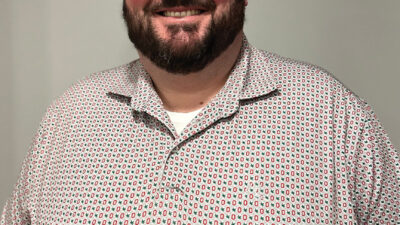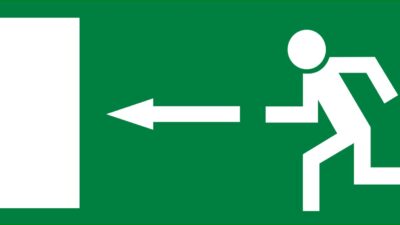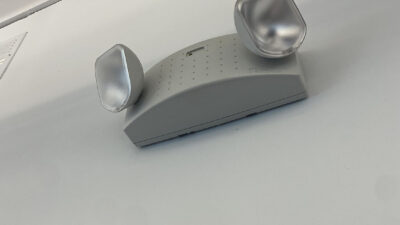Presenters from the August 28th webcast, Lighting and lighting controls: Principles and practices, answer audience questions.

Lighting insights:
- It is necessary to check with the authority having jurisdiction and project team members to meet the necessary standards for each project.
- Communicating the advantages of different systems allows for a project to be successful, comfortable and efficient for the owner and occupants of a building.
Learning objectives:
- Understand lighting design fundamentals.
- Explore lighting control strategies for different building types.
- Navigate lighting control codes and standards.
The integration of effective lighting and lighting controls in nonresidential buildings is critical for enhancing functionality, safety and energy efficiency. Anne Ullestad, LEED AP, LC, Design. IALD and Michael Chow, PE, CEM, CxA, LEED AP BD+C covered the principles and practices of lighting design and controls, with a particular focus on electrical engineers and lighting designers.
After the presentation, audience members had a chance to ask questions to the experts. Below are some highlights from the Q&A, covering topics like lighting calculations, branch circuit systems, meeting owner needs and ensuring code compliance.
When using software for lighting calculations, a factor is provided for the light loss factor (LLF) to understand the condition at the end of the luminaire’s life cycle. For fluorescent lights, this factor was typically set at 0.7. Is there any guideline for LED lighting?
Anne Ullestad: I have seen people use either 0.85 or 0.8. Since the effective end of life of LEDs is measured at L70 (70% of initial lumen output), it makes sense to go directly to the in-between at 0.85, so that the initial and end of life light levels are always within 15% of the measured levels. More conservative calculations will use 0.8, so that the light levels never reduce past 10% of the recommendations.
Do you adhere to the 3000K or 2700K correlated color temperature (CCT) LED standard for exterior lighting as recommended by Dark Sky International?
Anne Ullestad: When possible, using 2700-3000K is preferred in exterior applications. It’s also important to be aware of lights in the surrounding area, so if it’s an addition to a parking lot already using 4,000 K fixtures, it might be best to stick to the same thing. In wildlife areas, it might be better to use narrow-wavelength amber fixtures.
Isn’t it important to know if the architect is using the International Energy Conservation Code (IECC) or ASHRAE? I thought that if either is applicable in your jurisdiction, only one could be used per project.
Michael Chow: Yes, it is important to coordinate with the entire design team at the start of design to verify that the entire design team is using the same energy code. Most plan examiners will not allow the design team to use different energy codes. We recommend confirming with the authority having jurisdiction (AHJ) at the start of design that the proposed energy code the design team plans to use is applicable to avoid any potential issues at the end of design and submittal for permit plan approval by the AHJ.
Which types of facilities do you typically see with critical branch circuit lighting? Just hospitals?
Anne Ullestad: Most of the time, I see critical branch lighting in hospitals, but I have also seen it used in science and technology spaces where loss of power could interrupt research experiments, or in spaces with live animals. It is typically up to the client if they think it’s necessary for the function of the space.
What’s the difference between distributed and central lighting control systems?
Anne Ullestad: A distributed relay system means that the relays are literally distributed around the building. Typically, each room will have its own relay controller that would send information back to a single head end unit. A central lighting control system uses relay panels, typically located in electrical rooms, to wire to light fixtures throughout the building. Those panels then send information back to a head end unit. Functionally, they are very similar.
When would new lighting codes will be implemented to each state?
Michael Chow: It is up to each state to decide. We suggest checking energycodes.gov to find out the latest energy codes per state. There may be links for state codes that explain when codes are updated.
The presentation mentioned ASHRAE occupancy sensors that dim lights within 15 minutes of vacancy. Where is this requirement found in the ASHRAE Standard 90.1: Energy Standard for Buildings Except Low-Rise Residential Buildings?
Michael Chow: Chapter 9 of ASHRAE 90.1-2022 covers lighting. See 9.4.1.4 Exterior Lighting Controls; e. states that occupancy sensing light reduction control shall reduce the lighting power by a minimum of 50% when no activity has been detected for a time of no longer than 15 minutes.
Are these codes and specifications for indoor applications only, or do they apply to outdoor applications?
Michael Chow: Codes typically are different for interior and exterior lighting. ASHRAE 90.1-2022, for example, has different requirements.
For the linear lighting examples in New Jersey, how do you plan for easy repair of segments that will fail over time? What spares program do you recommend, and do operators follow guidance?
Anne Ullestad: The drivers for the fixtures are located above the accessible ceiling and are easy to replace as needed. The LED modules are accessible by removing the lens and have a plug-and-play wire connection for replacement. The client opted not to store replacement LED modules on site, so they will have to contact the manufacturer for replacements as required.
For circadian lighting with two drivers to control intensity and color separately, what type of drivers are used?
Anne Ullestad: It depends on the manufacturer, but most offer the option of 0-10V, DALI or DMX.
Are there any circumstances or applications where logarithmic dimming is preferred over linear?
Anne Ullestad: Logarithmic is actually a more comfortable dimming protocol for users, because of the way we perceive light. With linear dimming, it can take a while for the eye to notice that the light is dimming, but then, towards the low end, it seems to dim much quicker. For logarithmic dimming, the light levels decrease dramatically at first, and then level out, but our eyes perceive a more even dimming process.
Who typically drives design, regarding whether the system is to be closet-based (dimming panels) or modular-in-field (controllable dimmable relays)?
Anne Ullestad: The client should have the final decision on what control system they want. They will be the ones using and maintaining the system, so the best thing the designer/engineer can do is give them the necessary information to make an informed decision.
For a space like an electrical room, would you want to use a line voltage toggle switch for reliability or networked low voltage for the ability to detect a failure? Our state’s energy code does not require automatic shut-off for lights in electrical rooms.
Michael Chow: The NFPA 70: National Electrical Code (NEC) states that lighting in electrical rooms shall not be controlled by automatic means alone and should be sufficient for servicing and lamp changes. We recommend checking with the AHJ to determine the lighting requirements for electrical rooms for your project.
It’s my understanding that you are not allowed to have unswitched “night lights” on emergency generator power for egress pathways such as corridors in buildings, per IECC 2021. Is there any exception to this?
Anne Ullestad: Our concern is that if we now start putting emergency lights in corridors on emergency lighting control units and the units fail, there could be no egress path lighting during an emergency.
What is considered “alteration” to an existing lighting system and what portion of the lighting needs to comply with the latest requirements, all lighting or just the “altered” lights?
Michael Chow: For ASRAE90.1, go to the lighting chapter (9 in the 2022). For 90.1-2022, in 9.1.1., it provides the requirements for alterations to lighting systems. This states that the alternation has a wattage greater than 2000W, then compliance with Section 9.2 is required (which lists compliance paths).
What are your recommendations for writing a lighting control performance specification, given that each manufacturer offers different technologies and performance ranges?
Anne Ullestad: When writing a performance spec, I focus on how I want the system to perform. Sometimes I will include a three-name spec for fixture manufacturers.
When you specify lights, do you typically do a performance specification or do you name manufacturers? If you do name manufacturers, do you typically do one or multiple names? How do you deal with procurement and high-cost issues?
Anne Ullestad: For light fixtures, I typically use a primary manufacturer/model, with at least two alternates. When I have a base schedule, I’ll usually send it to my local manufacturer reps to help find alternates, since they know their lines the best and it will save time. I try to have at least two alternate manufacturers to help get a competitive bid. For specialty fixtures that don’t have alternates, I negotiate a price with the manufacturer before the job bids, so the client knows what the fixture will cost and can approve it.
So, lighting controls for a critical branch need to be on emergency power?
Anne Ullestad: Yes, the controller would need to function when power is lost.
When IECC 2024 references ASHRAE 90.1, which version do you use following the issuance of the 2025 version of 90.1?
Michael Chow: We recommend checking with the AHJ, which is typically the building department or plans examiner.
How do you also control the blinds and dimming so that the sun path is also followed to reduce the cooling load?
Anne Ullestad: Typically, the shades and light fixtures would be controlled by separate photosensors. The shades would have a photosensor on the window mullion, which would indicate when there is direct light coming in the window, and the shades would close accordingly. The light fixture’s closed-loop photosensor would be located beyond the shades inside the room, and measures the light coming into the space regardless of shade position.
Can you elaborate on the two driver requirements for color tuning?
Anne Ullestad: In a tunable white fixture, both the CCT and intensity of a light is able to change, so there needs to be a driver to control the CCT, and an additional driver to control intensity.
Is a third party required for functional testing?
Michael Chow: We recommend checking with the AHJ. ASHRAE 90.1 and IECC may be somewhat vague on the requirements for functional testing including third-party.
For the high-end trim Anne mentioned, does the energy savings justify the additional cost with payback over time?
Anne Ullestad: Many lighting control systems support programming a high-end trim without additional components, so there isn’t an additional cost. In the corporate cafeteria case study I mentioned, the high-end trim was set during programming, so it didn’t require any additional trips to the site for the manufacturer. When the light starts to degrade and they need to update the trim, the facilities staff can reprogram it themselves.
How have you found success in communicating the advantages of networked systems to clients that are not enthusiastic about the upfront cost?
Anne Ullestad: It’s best to explain the benefits of the system. It can also be helpful to talk to the facilities director and explain the system directly to them, since they will be maintaining the system once it’s installed. It’s the designer’s job to provide the client with information, but it’s ultimately the client’s decision on what they use.
Have there ever been cases in your careers where you have proposed changing wall finishes or colors to an architect in order to brighten spaces and save energy by reducing the lighting required in spaces?
Anne Ullestad: I always work with the architects and interior designers to make sure that we’re using the right lighting solutions to work with the materials and finishes in the space. Knowing how to work with darker colors is important, and can sometimes be unavoidable, like in the theater project from the presentation.
What design software is typically used to perform lighting calculations and to select fixtures?
Anne Ullestad: I use AGI32 for photometrics. For fixture selection, I try to keep up to date with products available on the market through the support of my local reps, trade shows and industry publications.
How can a control system calculate when LEDs need to be replaced?
Anne Ullestad: A networked control system can be used to calculate the end of life in two ways. The first is by tracking the hours of use of a fixture, which would be programmed based on the manufacturer’s rated life. The second is by using a photosensor to detect when a room drops below the designed average illuminance levels. For each method, group relamping is preferred for maintenance.



